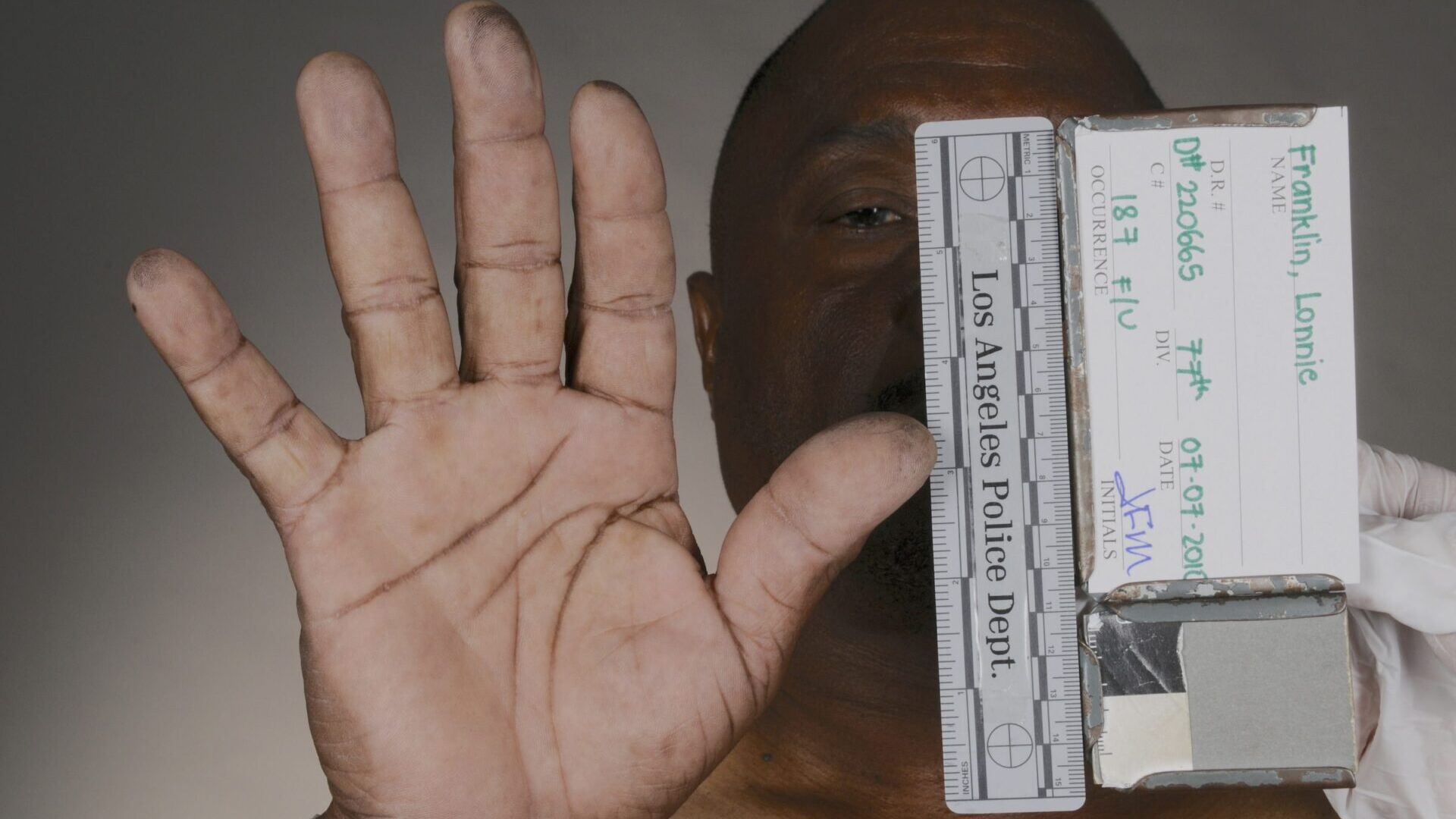If a poverty-stricken African-American woman – a prostitute – is murdered in South Central Los Angeles, and the case is overlooked by the LAPD because of her “lifestyle,” does her death matter?
At the disturbing core of Nick Broomfield’s documentary Tales of the Grim Sleeper, this appropriated age-old, “If a tree falls in the woods” paradox is examined in all too real circumstances.
In July 2010, a man suspected of murdering over 100 women over a 25-year span was arrested, and shockingly, by accident. His name is Lonnie Franklin Jr., and his arrest happened to be a mere coincidence for police officers, who matched his DNA to 20 possible victims on a piece of trash he threw away (while investigating another unrelated case). Despite the staggering number of murders in the infamous crime-ridden city, the police never gave this serial murder mystery much thought, much less a made it a priority. Today, Broomfield goes to South Central to talk to those who went overlooked by police, and to find out more about this man gravely nicknamed the “Grim Sleeper.”
Tales of the Grim Sleeper comes off of the uphill swing of many popular true-crime episodic today. This new wave of American entertainment finds its home at HBO, whose shows include “The Jinx,” “True Detective,” and the greatest television show in history*, “The Wire.” This American Life’s latest golden ticket, “Serial,” is a podcast that tried to get to the bottom of a case that found Adnan Syed guilty of murdering his ex-girlfriend Hae Min Lee, despite a lack of any physical evidence. Just this April 20th, Serial became the first ever podcast to win a Peabody Award. Having an audience already fine-tuned to, and oddly enthusiastic about, real-life stories of murder and mystery, Broomfield presents a story so surreal it sounds like a horror film.
Having an audience already fine tuned to, and oddly enthusiastic about, real-life stories of murder and mystery, Broomfield presents a story so surreal it sounds like a horror film.
Friends of Lonnie’s line the streets near his once lived-in home and this is where Broomfield starts his journey into the “Grim Sleeper’s” world. Asking Lonnie’s friends personal questions, we are painted a picture of a man who was philandering and a bit “weird,” but nevertheless a seemingly good father and neighbor. When police raided his home and finally put the cuffs on his wrists, some were shocked, but mostly everyone sighed in relief, including Pam Brooks.
Pam becomes Broomfield’s tour guide for the city, transforming into unofficial journalist by fielding questions for Broomfield, who she feared would get shot for his being a white man with a camera asking questions. Brooks is a firecracker; an ex-prostitute and crack addict, she is now four years sober. While on the streets she had an intimate encounter with Lonnie that she almost never escaped from. Her previous experience with him is the catalyst for her help in this film.
For those unfamiliar with Broomfield’s filmmaking approach, it is quite unconventional in its DIY-style. For instance, he uses Google Maps to illustrate places as opposed to a more visually pleasing, modern looking interactive map. He carries the sound equipment on his chest and the boom mic in his hand, with another crew member serving as his cameraman. It is reminiscent of a college-budget student film, which at times can be distracting, as the guerrilla camerawork lends to his inserting of himself into every scene, sometimes unnecessarily. The film at times becomes more about Broomfield and his “fish out of water” situation than on the actual subjects. But on the other hand, this style is extremely personal; he establishes direct connections with the people and in the area which he roams.
Lonnie himself never speaks in the film, as he is currently behind bars awaiting a trial date. The stories, or tales, told in the film build him up to be this mythical creature, so an interview with him would have given the film more balance and stability. Theories run rampant throughout the community, questioning the possibility of crooked police officers contributing to the deaths, and covering it up by adding them to the Grim Sleeper’s total. Another theory is that Lonnie’s son had something to do with the incidents. More investigative journalism on Broomfield’s part could have explored these different avenues and either uncovered or, put to rest, these claims. Instead, we are left wondering what to make of the grand accusations presented, and then glossed over just as quickly as they came.
Under the helm of a different director, Tales of the Grim Sleeper would have been a different film, and arguably to better results. Contrary to popular takeaway, I would trade Broomfield’s casual interview style for a harder hitting investigative approach. The interviews he conducts are mostly assumptions or educated guesses about the life of Lonnie Franklin Jr. It’s hard to find credibility in the What Ifs. The end of the film hits the hardest as survivors of the attacks finally speak, finally giving us some sort of concrete evidence. Tales of the Grim Sleeper is so outlandish, shocking, and culturally relevant that of course it’s going to drop a few jaws, but the ever scarier afterthought is how these murders went unaccounted for, for so long. Now that is truly haunting.
*Not a proven fact, although this reviewer begs to find a show any better.
Tales of the Grim Sleeper premieres on HBO on Monday, April 27th.
Morgan Rojas
Certified fresh. For disclosure purposes, Morgan currently runs PR at PRETTYBIRD and Ventureland.


